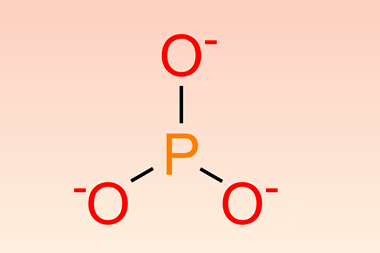But FDA says the chemical is safe at current exposure levels
The US National Institutes of Health (NIH) has again expressed ’some concern’ about the effects of bisphenol A (BPA) on the brain, behaviour, and prostate gland in foetuses, babies, and children at current exposure levels. The 3 September assessment comes only weeks after the US Food and Drug Administration (FDA) concluded that BPA is safe at typical exposure levels from food and drink. The chemical mimics oestrogen, and is commonly found in baby bottles, children’s cups and cans.
In its final report, NIH’s National Toxicology Program paints a slightly less gloomy portrait of BPA than it did in an April draft version. The new report lowers the level of concern about BPA’s effect on the mammary gland and puberty onset from ’some’ to ’minimal’.
By contrast, FDA’s draft safety assessment, issued 15 August, concludes that ’an adequate margin of safety exists for BPA at current levels of exposure from food contact uses’. FDA’s opinion, which is based on two comprehensive animal studies that were funded by the chemical industry, directly contradicts conclusions of the agency’s Canadian counterpart.
Disconcerting disagreement
Health Canada released a preliminary report in April concluding that BPA threatens young children and the environment. After studying the results of more than 100 studies, the Canadian government labelled BPA ’toxic,’ and announced its intention to ban the chemical from baby bottles.
’It is disconcerting that you have two regulatory bodies in neighboring countries that take such a different view of public health protection with regard to preventing risks from a clearly oestrogenic compound,’ Yale toxicologist Gary Ginsberg tells Chemistry World.
Although the NIH and FDA reports appear contradictory, the American Chemistry Council (ACC) welcomed them both. ’The conclusions of the Food and Drug Administration assessment, which comprehensively includes scientific information from a wide range of sources including the [NIH] report, are consistent with other government agencies that have evaluated bisphenol A,’ said ACC, which represents chemical manufacturers. For example, the European Food Safety Authority reached a similar conclusion in a 23 July report.
The ACC has launched a major campaign to defend BPA, including one effort that helped killed a California state bill aiming to ban all but trace amounts of BPA from the food and beverage containers of babies and young children.
The trade association publicly suggested that any ban on BPA would threaten food safety and increase grocery costs. On 29 August, the California State Assembly rejected the bill by a 35-30 vote. Fifteen of the state legislators were absent or didn’t vote.
Right decision?
’California’s legislators made the right decision for their consumers,’ said ACC’s Steven Hentges. ’Products targeted by this bill have been affirmed to be safe by government bodies around the world based on the science, most recently by the FDA’.
There was some criticism, however, of industry efforts to defeat the bill. ’It is a very powerful lobby,’ says Scott Belcher, a University of Cincinnati pharmacologist. ’With the worldwide production capacity at over 6.4 billion pounds per year, BPA is an important chemical and an important money maker.’ The US chemical industry produces roughly 2.3 billion pounds of BPA annually, and the chemical’s global market is estimated at $6 billion (?.3.4 billion)
The BPA safety issue is far from settled. FDA’s Science Board will convene in Washington, DC, on 16 September to further review the topic. The meeting is expected to feature testimony from the NIH review panel and Frederick vom Saal, a prominent BPA opponent from the University of Missouri.
Bills to ban the use of BPA in all food and drink packaging and all children’s products were also introduced in the US Senate and House in April and June, respectively.
Meanwhile, research from the Yale School of Medicine suggests that continuous exposure to low levels of BPA can affect brain function in monkeys [1]. The researchers exposed monkeys to the maximum daily doses of BPA deemed safe by the US Environmental Protection Agency, and found that brain cell connections linked to mood, learning and memory were disrupted. It is the first time the chemical has been linked to health problems in primates, rather than rodents.
Rebecca Trager, US correspondent for Research Day USA
References
1 C Leranth et al, Proc. Natl. Acad. Sci., 2008, DOI: 10.1073/pnas.0806139105






No comments yet